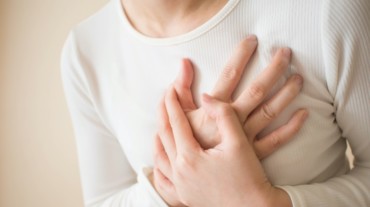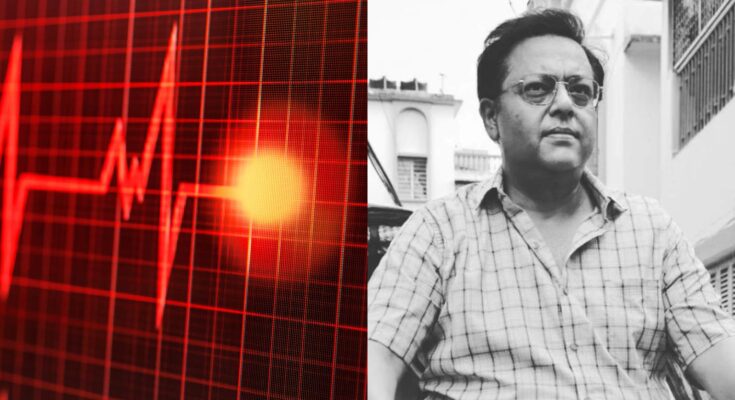Popular television actor Nitesh Pandey, who played Dheeraj Kumar in Anupamaa, breathed his last on Wednesday reportedly after a cardiac arrest. His death has come as a shock to the Indian showbiz fraternity, which has witnessed a number of well-known names succumb to cardiac arrest cases in the recent past. Such rising cases of death due to cardiac arrest are a reminder that we need to take care of heart health.
As per media reports, the 51-year-old, who also featured in the film Om Shanti Om, died almost immediately after suffering a cardiac arrest. He was found dead in his hotel room in Igatpuri, Nashik in Maharashtra. The news also came as a blow amidst the sudden demise of two other television actors – Vaibhavi Upadhyaya and Aditya Singh Rajput – due to other reasons.

Increasing cases of cardiac arrest in India
Sudden cardiac death (SCD) is natural death from cardiac causes heralded by abrupt loss of consciousness within 1 hour of onset of an acute change in cardiovascular changes.Recently we have seen surge in number of SCD especially in younger patients. Common causes are blockage in coronary arteries, which can cause massive heart attack and heart rhythm related disorders. There are some other causes also but are comparatively less common. The cases of cardiac arrest post Covid-19 have also increased. Whether it is really something needs evaluation and further studies, says Dr Prateek Chaudhary, Consultant Interventional Cardiologist, Asian Hospital, Faridabad, Haryana.
Not only from my personal practice experience but also a report published recently by the Indian Medical Association has revealed that Indian’s suffering from heart diseases at earlier age i.e. almost 33 percent earlier than people from other demographics. Some of the common reasons for it might be like sedentary lifestyle, smoking, obesity and psychological stress. While Indian’s are predisposed to heart attacks physiologically, there is a lot that we can do as individuals to protect our heart health, adds Dr Kartik Bhosle, Consultant Cardiologist, Surya Mother and Child Super Speciality Hospital, Pune.
What is cardiac arrest?
As per the National Heart, Lung, and Blood Institute, US, cardiac arrest happens when the heart unexpectedly stops pumping blood. It interrupts the blood supply to the brain and other important organs is interrupted. They are also caused by certain types of arrhythmia that block the heart from pumping blood. Cardiac arrest is an emergency that can kill in minutes.
The main causes of arrhythmias are ventricular fibrillation and ventricular tachycardia is the main causes of cardiac arrest. Someone who has had cardiac arrest, coronary artery disease, heart valve disease, congenital heart defects and arrhythmia, is at a higher risk of getting a cardiac arrest, as per the institute.

Symptoms of cardiac arrest
As per experts, a person having a cardiac arrest might not experience any symptoms. However, some people may experience the following symptoms:
- Lethargy
- Light-headedness
- Shortness of breath
- Nausea
- Chest pain
- Heart palpitations
- Discomfort in one or both arms, neck, jaw, or stomach
- Loss of consciousness
- If left unattended, symptoms of cardiac arrest can be life-threatening.
Who is at risk of cardiac arrest?
One of the most common factors that lead to cardiac arrest is a sedentary lifestyle. Drinking too much alcohol and smoking can also increase your risk of cardiac arrest. Someone who suffers from high blood pressure, high cholesterol, low potassium or magnesium, and obesity is also at risk. However, it could happen that some people don’t experience cardiac arrest with no risk factors at all. Going for regular check-ups of your cardiovascular health is a must!
How to prevent the risk?
Timely identification through routine medical check-ups, and interventions can make a significant difference in preventing cardiac emergencies. It is also a necessity now to ensure access to prompt emergency care. What we can do as a community is to equip our schools, sporting facilities and public facilities with automated external defibrillators (AEDs), and train staff members on how to conduct cardiopulmonary resuscitation (CPR). It will result in increasing an affected person’s chances of survival in those critical moments. Additionally, we also need to adopt a healthy lifestyle with regular exercise, a balanced diet, avoiding smoking, stress and excessive alcohol consumption is key, says Dr Bhosle.
Source link




